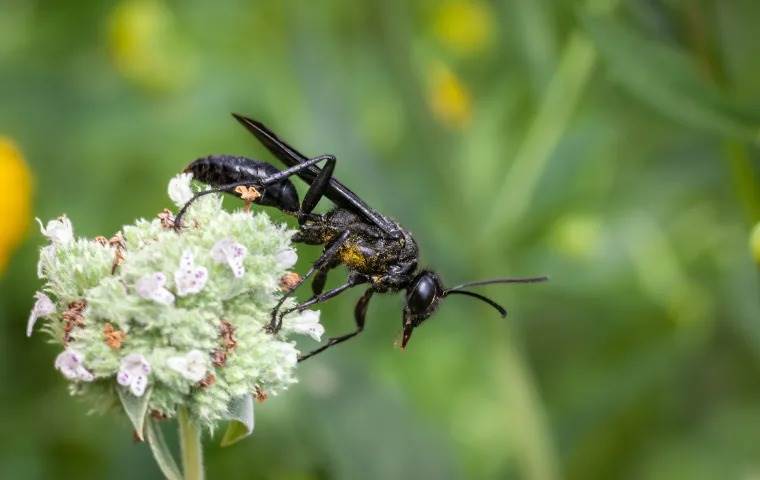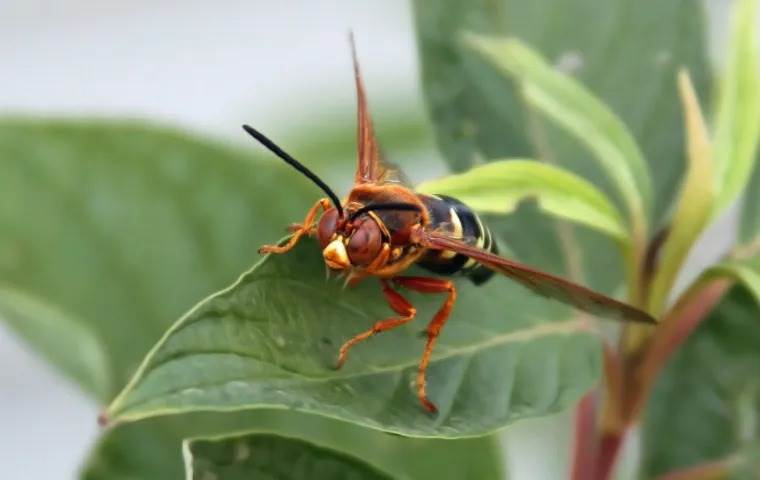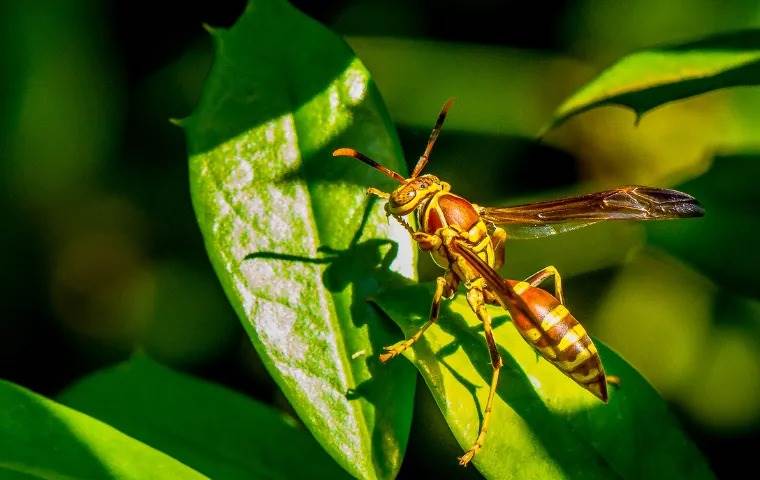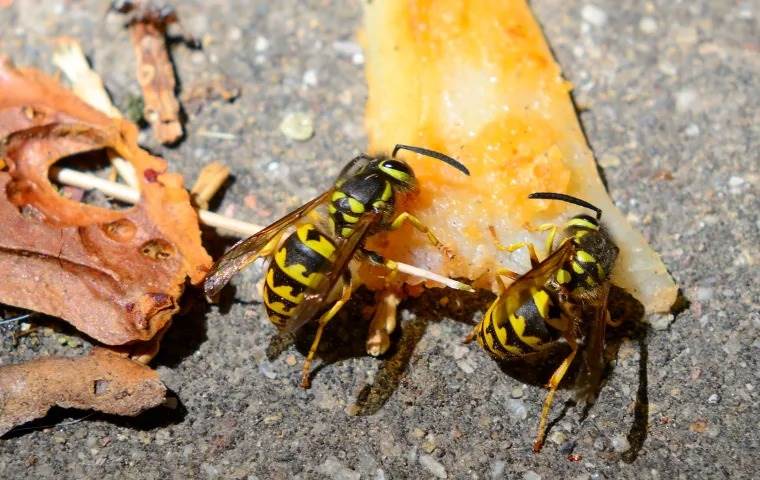What Are Those Black Wasps in Florida?

Florida's warm climate not only invites sun-seeking tourists. It also hosts mysterious winged residents – black wasps.
Black wasps are common in Florida and help the environment by pollinating plants and controlling pests. Each species is distinct in size, behavior, and preferred habitats.
While black wasps typically don't show aggression towards humans, what do you do if you accidentally disturb their nest?
In this article, you'll learn to identify different types of black wasps. You’ll also understand their behavior and the common sites of a wasp nest. Additionally, you’ll learn professional pest control methods that could prevent infestation problems and ensure a safe coexistence with black wasps.
Key Takeaways
- Black wasps are common in Florida, helping the environment by pollinating plants and controlling pests.
- Black wasps are generally solitary and not aggressive toward humans. But they may sting if they feel provoked or threatened.
- Safe coexistence with black wasps is possible with proper interaction and control measures.
Identifying Black Wasps in Florida
Florida has different types of wasps. Learning about their distinct appearance and behavior can help you coexist with them safely.
Physical Characteristics
Black wasps typically have a shiny black body with slight color variations depending on the species. Their body has three parts: the head, thorax, and abdomen.
The abdomen of a black wasp can sometimes feature yellow markings, which aid in identification. For example, cicada killer wasps have pale-yellow markings, while yellowjacket wasps have alternating black and yellow markings.
The size of black wasps ranges from ½ to 1½ inches in length. Female wasps are slightly larger than males.
- Color: Predominantly black, some with yellow or white markings
- Size: Typically ½ to 1½ inches
- Body segments: Head, thorax, abdomen
Common Species
1. Great Black Digger Wasp (Sphex pensylvanicus)
Social or Solitary? | Solitary nature |
Characteristics | Recognizable by its size, black coloration, and occasional yellow markings on the abdomen |
Other Traits | Blue or purple sheen on wings |
Nest Type | Typically a burrow in the ground |

2. Mud Dauber Wasp (Sphecidae)
Social or Solitary? | Solitary and non-aggressive |
Characteristics | Recognizable by its “thread-waisted” body (long, slender segment between the thorax and abdomen). Builds distinctive mud nests, often on vertical surfaces |
Other Traits | Preys on spiders to feed their larvae |
Nest Type | Cylindrical mud tubes |

3. Cicada Killer (Sphecius speciosus)
Social or Solitary? | Large, solitary wasp |
Characteristics | Recognizable by its size, dark coloring, and yellow markings on the abdomen |
Other Traits | Hunts cicadas to provision their nests |
Nest Type | Burrows in the ground |

4. Paper Wasp (Polistes spp.)
Social or Solitary? | Social insects living in colonies with a queen |
Characteristics | Recognizable by its slender “waist" between the thorax and abdomen. Builds distinctive nest out of paper-like material |
Other Traits | Generally non-aggressive but may sting if threatened |
Nest Type | Open-celled, umbrella-shaped structure made from chewed-up wood pulp. |

5. Yellowjacket (Vespula spp.)
Social or Solitary? | Social wasps living in colonies |
Characteristics | Recognizable by black and yellow markings |
Other Traits | Can be aggressive, especially when their nest is threatened |
Nest Type | Papery, enclosed structure, often underground |

Habitats and Nests
Preferred Habitats
Black wasps are not overly selective about where they live. They adapt to various habitats. So, you can spot them in rural and urban settings across Florida.
- Residential areas: Gardens or yards
- Natural settings: Flowering fields and open woodland
- Urban spots: Parks and green spaces
- Near water: Lakes and riversides
Nesting Sites
When constructing nests, black wasps show specific preferences:
- In the ground: Patches of soil or sand to dig nests.
- On structures: Under the eaves of buildings or inside hollow walls.
- Among vegetation: On tree branches or wood cavities
These nests are usually well-constructed and protect the developing wasp larvae.
Behavior and Interaction
Diet and Prey
Adult black wasps feed on nectar for energy and various arthropods for protein. Meanwhile, they place paralyzed prey (usually caterpillars and spiders) alongside their eggs in nests, providing a food source for the emerging larvae.
Human Interactions
Black wasps are generally not aggressive. While they might be a bother if nesting in busy areas, they play a beneficial role in controlling pest populations.
Interaction with Humans:
- Generally avoid contact
- Sting if provoked, which can be painful
- Can be a nuisance in high-traffic areas
- Beneficial for pest control in gardens and lawns
Management and Control
Effectively managing and controlling black wasps in Florida requires a mix of targeted control methods and preventive measures. Prioritizing safety is crucial, as mishandling wasp encounters may lead to painful stings and swelling.
Wasp Control Methods
Start by inspecting your property for nests. Consider using a long-reaching net or wasp spray for nests on high surfaces or underground nests.
If wasps present an immediate threat, opting for professional pest removal might be the safest route.
Preventive Measures
Avoiding wasp-related issues begins by securing potential nesting sites. Simple home maintenance can discourage wasps from making your property their home. Fix holes or gaps on exterior surfaces and ensure you properly seal garbage cans to avoid providing a food source for these insects.
Minimize the wasp population around your home by strategically placing wasp traps during peak activity periods in early summer.
Frequently Asked Questions
How can I identify the types of black wasps found in Florida?
You can identify Black wasps in Florida by size, color, and wing patterns.
What should I do if I'm stung by a black wasp?
If a black wasp stings you, remove the stinger if it's still present. Clean the affected area with soap and water and apply ice to reduce swelling. In cases of severe allergic reactions, seek medical attention promptly.
Are there any particularly aggressive wasp species I should watch out for in Florida?
While most black wasps are not aggressive, take caution around the Southern Yellowjacket. It can be more aggressive, especially when their nest is threatened.
What are the nesting habits of black wasps in Florida?
Black wasps are solitary insects that often build nests in the ground or cavities in wood.
Can black wasps be dangerous or poisonous to humans?
Black wasps are not considered dangerous or poisonous to most humans. Their venom is used primarily for paralyzing prey. However, individuals who are allergic to wasp stings may experience severe reactions.
